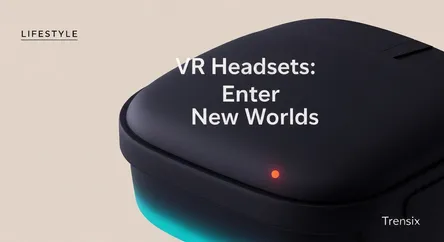Lifestyle
VR Headsets: Enter New Worlds

Discover what VR headsets are, why they're a trending tool in education, and how they are transforming learning experiences for students everywhere.
What is it?
A Virtual Reality (VR) headset is a wearable device that covers the eyes, replacing a user's natural environment with a computer-generated, three-dimensional world. Using high-resolution screens for each eye, specialized lenses, and integrated motion tracking sensors, VR headsets create a convincing sense of presence and immersion. This technology allows users to not just view a digital space but to feel as if they are actually inside it, able to look around and interact with virtual objects and environments in a natural, intuitive way.
Why is it trending?
In education, VR headsets are trending because they transform passive learning into active, experiential engagement. The technology breaks down the physical walls of the classroom, enabling students to take virtual field trips to historical sites, explore the human body from the inside, or conduct complex science experiments in a safe, simulated environment. As headsets become more affordable and user-friendly, schools and universities are increasingly adopting VR to boost student motivation, understanding, and retention of complex subjects by making abstract concepts tangible and interactive.
How does it affect people?
VR technology profoundly affects the learning process. For students, it fosters deeper understanding and empathy by providing firsthand perspectives, whether dissecting a virtual frog or walking on the surface of Mars. This immersive approach caters to various learning styles, particularly visual and kinesthetic learners. For educators, it provides a powerful new teaching tool to illustrate difficult concepts and create memorable lessons. It enables a 'learning by doing' model that can significantly improve skill acquisition and knowledge retention, preparing students for future careers with practical, simulated experience.